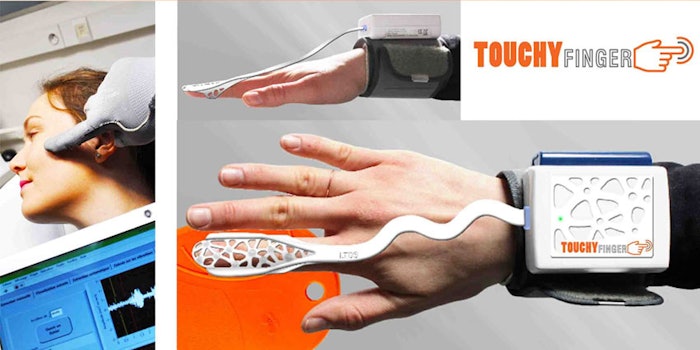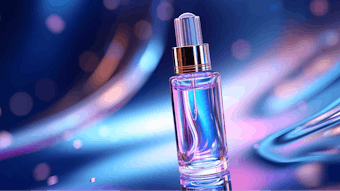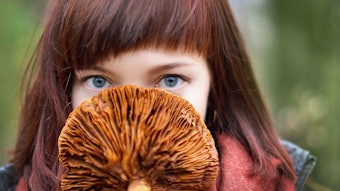
Cosmetic Valley has organized the 6th edition of 'The Cosmetic Victories.' The worldwide competition aims to reward and promote innovative projects related to the perfume and cosmetics industries.
Previously: Cosmetic Valley Announces 2020 Cosmetic Victories Winners
Six finalists were chosen in February 2021 and winners were announced in March. In this interview, we profile "Touchy Finger," an augmented and connected human finger to assess skin and hair feel, represented by Roberto Vargiolu, Ph.D.
Update: "Touchy Finger" was named the jury's favorite entry in the 2021 Cosmetic Victories competition.
What is your innovation? How is it used?
 Gaining knowledge and understanding the sense of touch allows us to gain insight into the consumer's personal experience and becomes an essential asset for cosmetic marketing. The Laboratory of Tribology and System Dynamics (LTDS), a company dedicated to developing tools dedicated to the metrology of touch, has developed know-how and technologies designed to objectify touch.
Gaining knowledge and understanding the sense of touch allows us to gain insight into the consumer's personal experience and becomes an essential asset for cosmetic marketing. The Laboratory of Tribology and System Dynamics (LTDS), a company dedicated to developing tools dedicated to the metrology of touch, has developed know-how and technologies designed to objectify touch.See related: Epidermal Evolution: Rhythm, Stress and Touch Response
The company's research focuses on skin and capillary bioengineering, and developing knowledge of the tactile interaction of the human finger during the act of touch. This work has made it possible to develop an in vivo device for the characterization of touch.
When a human touches the surface of an object with the index finger, the friction of the skin and the surface causes the mechanoreceptors in the fingertip to vibrate. These biosensors are like small discs that are highly sensitive to the vibration and deformation of the skin on the finger.
If the surface is soft, the biosensors generate small vibrations of a few hertz. If the surface is rough, the vibrations have greater amplitude and their frequency is a few hundred hertz. The vibratory response is then instantly converted into an electrical signal and transmitted via the central nervous system to the brain, which interprets this information into the sensory quality of the surface.
Previously: Cosmetic Victories Finalist Profile: Penetrating Peptide for Enhanced ROS Elimination
Inspired by the functioning of the human finger, LTDS has developed an augmented human finger-connected object capable of measuring the softness of skin, hair and all surfaces. Like the human finger, the device is equipped with vibration sensors and a sensor for measuring the contact force. This device comes in the form of a half-ring, which slides over the tip of the index finger.
When touching a surface, the vibrations and pressure force recorded by the device are transformed into a softness parameter. This information is transmitted to a tablet via a Wi-Fi connection. The experimental results obtained showed a perfect correlation between the vibrations and the sensory classification of the groups of experts.
What is novel about this technology? How might it shape the cosmetics and personal care market?
Today, to assess the tactile sensation of products, cosmetic manufacturers call on experts. Their objective is to subjectively note the sensory quality perceived on the skin or hair. While this method provides a sensory indication, it does not objectively measure the softness of the skin or hair.
Featured: A Soft Touch—Concepts in Hair Softness
Until now, no device in the cosmetic industry market can be used to measure the softness of skin or hair with an instrumented and connected human finger. By simply placing a half-ring on the finger, the user will be able for the first time assess the softness of their skin and hair before and after applying a cosmetic product.
The ring data will be remotely analyzed by an AI algorithm, which will draw up a sensory profile for the user. Ultra-personalized care and cosmetic products can then be offered to users by the brands to offer them a new sensory experience.
Where did your idea come from? (A market need? A new technology?)
The idea was born from a simple observation: when you touch a surface with your finger, it generates a friction noise. The louder the noise, the less smooth the surface and vice versa. The solution could have been to simply measure the noise with a microphone but this is not feasible in a noise environment disturbed by other noises.
To overcome this problem, the solution was to use a vibration sensor called an accelerometer. By sticking this sensor on a lateral side of the fingertip, we noticed that the frequency range of the measured vibrations corresponded to those of the mechanoreceptors, i.e., between 10 and 2,000 Hz. Experimental tests with experienced panelists then confirmed the link between the vibration of the fingertip and the smoothness of a surface.
Highlighted: How Touch Unlocks Skin Care's Power
Initially, the tests consisted of measurements with a sensor glued to the fingertip. This solution was oriented toward the current solution of a half-ring slipped on the index finger.
What product development challenges did you face in creating this innovation? What skills or technologies supported your success?
When there is no solution, measuring a physical quantity on living things to characterize softness is a real scientific and technological challenge. For the development of this invention, extensive research on the mechanical and tribological behavior of the fingertip when touching a surface was necessary. The results showed that there was a relationship between fingertip vibration, sensory perception and that the force with which the finger was pressed was proportional to the deformation of the fingertip. This result led to a patent filing in 2021.
What outcome do you anticipate from the competition? From your work?
Thanks to the notoriety of this initiative, the objective would be to find partners willing to ensure the promotion of the scheme to the cosmetics sector. Two types of partnership could be considered:
- The first would concern a distributor of metrology tools for cosmetics. The idea would be to install the device at various cosmetic sales outlets. The aim would be to provide consumers with personalized advice.
- A second would be of interest to cosmetic product assessment service providers who would like to control the correct implementation of protocols in their test subjects' homes.
Follow the C&T daily newsletter for more updates on the Cosmetic Victories nominee profiles.










